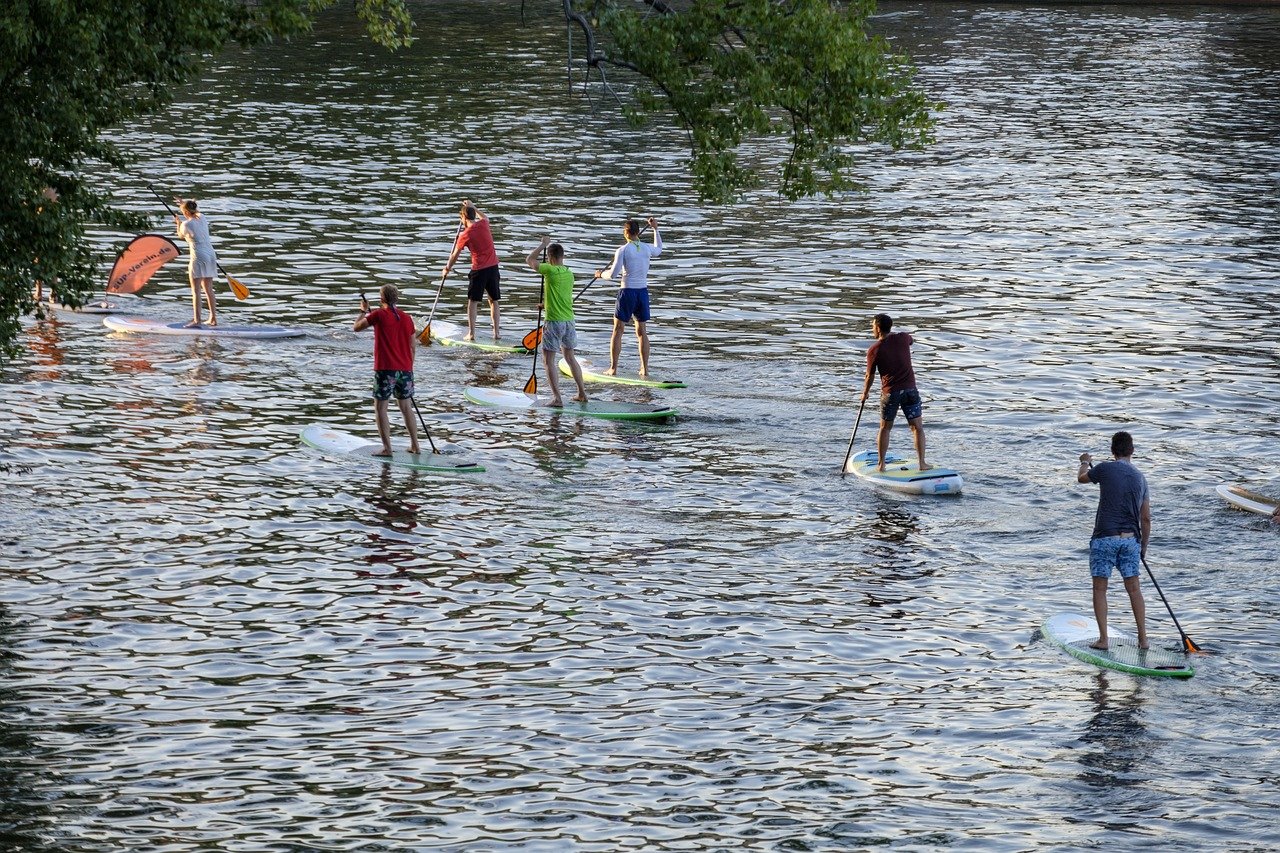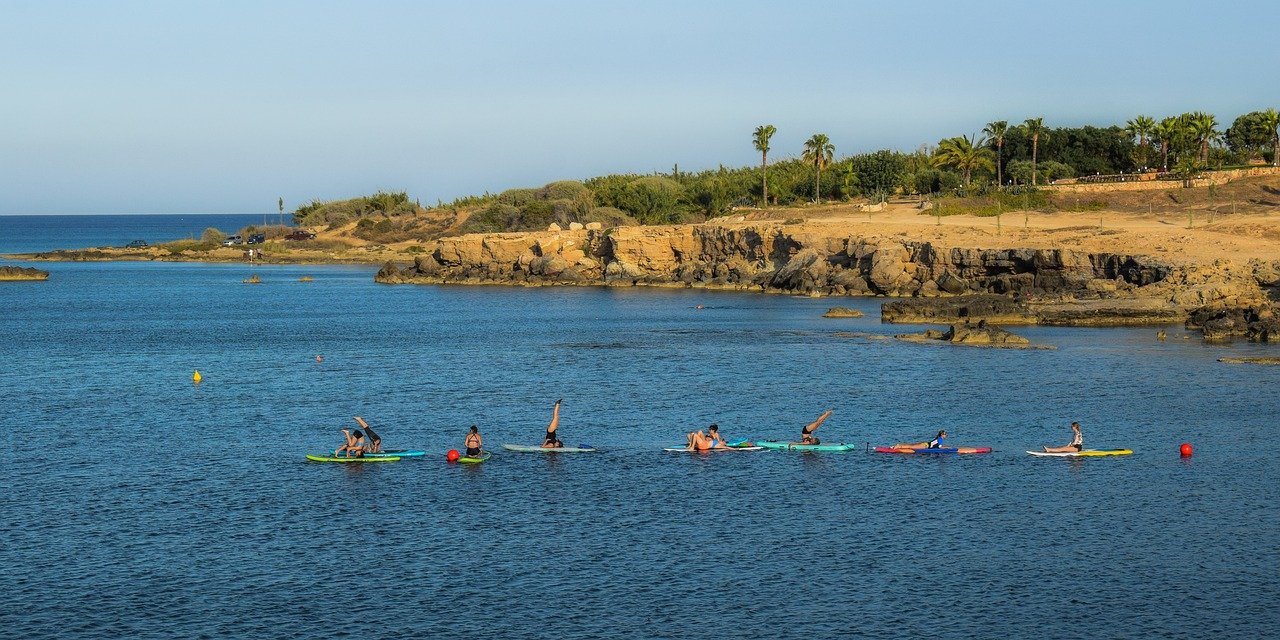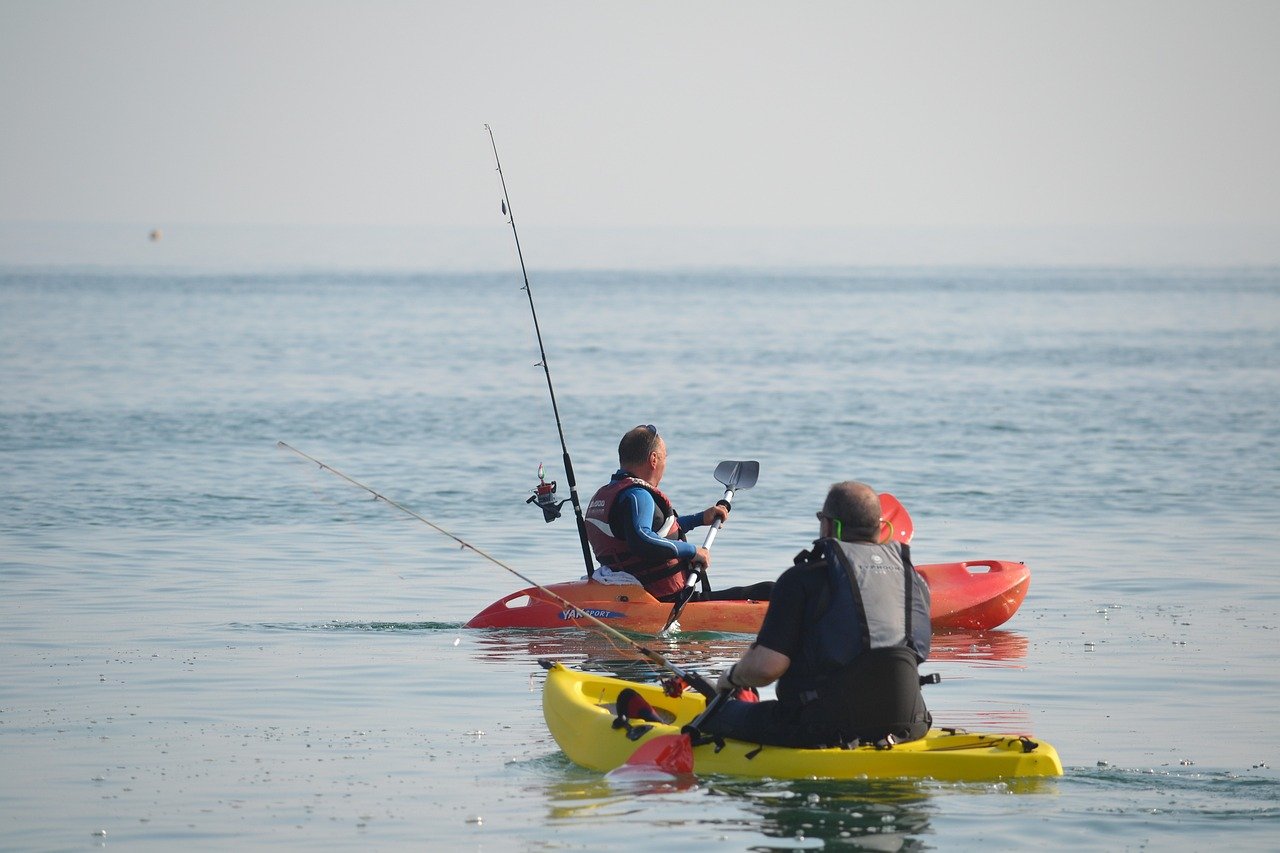Introduction
Stand-up paddleboarding (SUP) has become one of the most popular water sports worldwide, attracting people of all ages and fitness levels. In 2024, the sport continues to evolve with new gear, techniques, and trends. Whether you’re looking to get started or refine your skills, this guide will provide you with everything you need to know to become confident on the water.
What is Stand-Up Paddleboarding (SUP)?
Stand-up paddleboarding (SUP) is a water sport that involves standing on a large, stable board and using a paddle to propel yourself across the water. It combines elements of surfing and kayaking, making it a versatile and accessible sport for beginners and seasoned enthusiasts alike.
Key Benefits of SUP:
- Full-body workout: SUP engages your core, arms, legs, and back, offering a comprehensive workout. More information
- Mental wellness: Being out on the water can reduce stress and improve mental clarity.
- Accessibility: With various board types, anyone can find a setup that works for them, regardless of age or fitness level.
Why SUP is the Perfect Sport for Beginners
If you’re new to water sports, SUP is a fantastic choice. Here’s why:
- Easy to learn: With the right instruction, most people can stand up and paddle within their first session.
- Low impact: SUP is gentle on the joints, making it suitable for people of all ages and fitness levels.
- Versatility: Whether you want to paddle on calm lakes, rivers, or even surf on the ocean, SUP offers something for everyone.
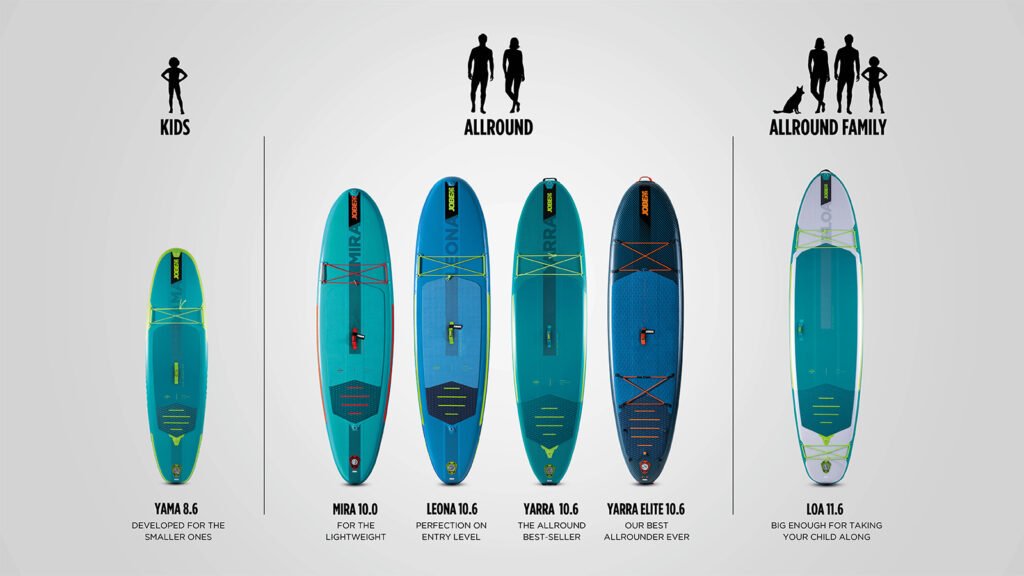
Choosing the Right Paddleboard for Beginners in 2024
When starting out, selecting the right paddleboard is crucial. Here are the factors to consider. Check here buyer guide
Types of Paddleboards
Check the review : The Best Stand Up Paddle Board
- Inflatable SUPs: These boards are portable, durable, and great for beginners. They’re easy to store and transport, making them ideal for those with limited space.
- Hard (Epoxy) SUPs: These boards offer better performance and speed but are less forgiving when it comes to balance. They’re suited for those looking to progress quickly.
Board Size and Volume
- Length: For beginners, a board between 10-12 feet is ideal. This size offers stability without sacrificing maneuverability.
- Width: A wider board (32-34 inches) provides more stability, making it easier to balance.
- Volume: The higher the volume, the more weight the board can support. Choose a board with enough volume to support your weight and any additional gear.
Essential Gear for Stand-Up Paddleboarding
Aside from the board, you’ll need a few key items to ensure a safe and enjoyable experience:
Paddle
- Adjustable Paddles: An adjustable paddle allows you to find the perfect height for your comfort. Look for a lightweight option made of aluminum or carbon fiber. Check it out here: Best SUP paddles
Leash
- Coiled Leash: A coiled leash is recommended for flat water as it prevents dragging in the water while keeping you attached to the board.
Personal Flotation Device (PFD)
- Inflatable Belt PFD: For beginners, an inflatable belt PFD is a good option. It’s unobtrusive and provides safety without restricting movement.
Proper Clothing
- Wetsuits and Rash Guards: Depending on the climate, you might need a wetsuit for colder waters or a rash guard for sun protection.
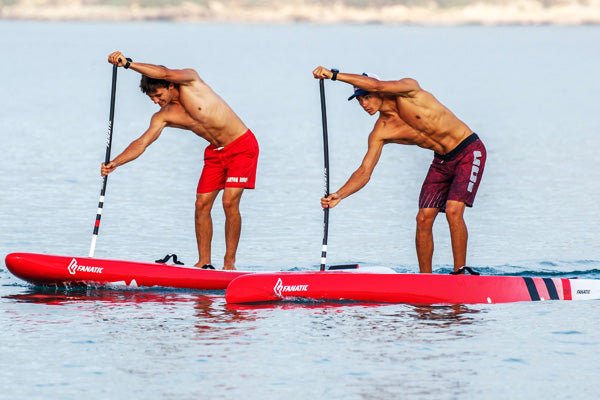
Safety Tips for Beginner Paddleboarders
Safety is paramount when you’re on the water. Here are some essential tips:
Check Weather Conditions
Always check the weather forecast before heading out. Avoid paddling in high winds, strong currents, or storms.
Know Your Limits
Start on calm, flat water and gradually progress to more challenging conditions as your skills improve.
Practice Falling
It’s inevitable—you’re going to fall off the board. Practice falling in a controlled manner, away from the board, to minimize injury.
Stay Hydrated and Use Sunscreen
Spending hours on the water can be dehydrating and expose you to the sun’s rays. Always bring water and apply waterproof sunscreen.
Basic SUP Techniques for Beginners
Learning proper techniques will enhance your paddleboarding experience. Here’s what you need to know:
How to Stand Up Paddle Board
- Start on your knees: Begin by kneeling on the board to get a feel for the balance.
- Slowly stand: Place your hands on the board for stability as you slowly stand up one foot at a time.
- Find your balance: Keep your feet shoulder-width apart and your knees slightly bent.
Paddling Basics
- Grip the paddle correctly: One hand should be on the top handle and the other about halfway down the shaft.
- Use your core: Engage your core muscles to drive the paddle through the water rather than relying solely on your arms.
- Switch sides: Alternate paddling on each side of the board to maintain a straight path.
Common Mistakes Beginners Make (And How to Avoid Them)
Everyone makes mistakes when learning a new sport. Here are some common ones and how to avoid them:
Standing Too Far Forward or Back
Standing in the wrong position can throw off your balance. Always stand with your feet centered on the board, directly over the carry handle.
Paddling with Arms Only
Using only your arms to paddle is inefficient and tiring. Focus on using your core to generate power.
Looking Down at Your Feet
It’s tempting to look down, but this can cause you to lose balance. Keep your head up and eyes forward.
Exploring SUP Activities in 2024
As you gain confidence, you might want to explore different SUP activities. Here are some popular options:
SUP Yoga
Combining yoga and SUP can be a peaceful and challenging experience. Many beginners find that the instability of the board adds a new dimension to their practice.
Check it out: The Best Yoga Paddle Board
SUP Racing
For those with a competitive spirit, SUP racing can be an exciting way to test your skills. Many local and international competitions welcome beginners.
SUP Fishing
If you enjoy fishing, SUP offers a unique way to reach spots that are inaccessible by boat or from shore. Make sure to use a stable board with enough room for your gear.
Top Locations for Stand-Up Paddleboarding in 2024
Where you paddle can greatly impact your experience. Here are some of the best locations to try in 2024:
Lake Tahoe, USA
Known for its crystal-clear water and stunning mountain backdrop, Lake Tahoe is a perfect spot for beginners.
Bali, Indonesia
With warm waters and beautiful beaches, Bali offers a range of paddling experiences, from calm lagoons to challenging surf spots.
The Amalfi Coast, Italy
Paddle along the picturesque coastline, exploring hidden coves and enjoying breathtaking views of the Mediterranean Sea.
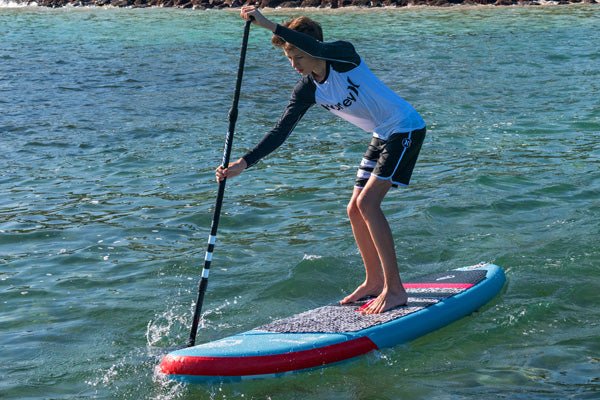
Sustainable and Eco-Friendly SUP Practices
As outdoor enthusiasts, it’s our responsibility to protect the environment. Here’s how you can paddle sustainably:
Leave No Trace
Always carry out whatever you bring in. Avoid disturbing wildlife and respect local regulations.
Eco-Friendly Gear
Consider purchasing eco-friendly gear, such as boards made from sustainable materials or biodegradable sunscreen.
Support Local Conservation Efforts
Many popular SUP destinations have local conservation programs. Consider donating or volunteering to support these efforts.
See this video to better your paddling.
Conclusion
Stand-up paddleboarding is a rewarding and accessible sport that offers endless opportunities for exploration and fitness. By following this guide, beginners can confidently take their first steps (or paddles) into the world of SUP in 2024. Remember, skill comes with practice, so get out on the water, have fun, and embrace the adventure!
